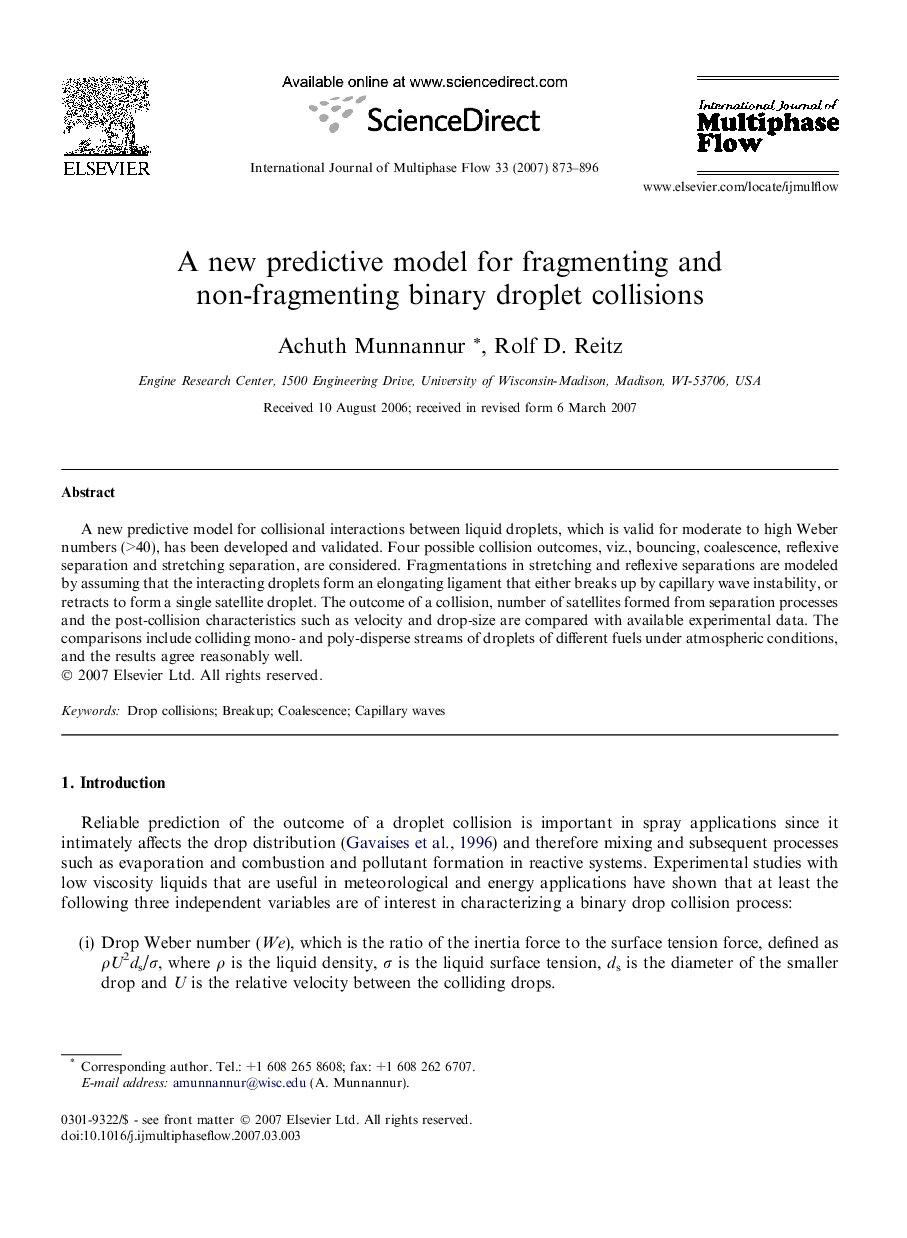| Article ID | Journal | Published Year | Pages | File Type |
|---|---|---|---|---|
| 667698 | International Journal of Multiphase Flow | 2007 | 24 Pages |
Abstract
A new predictive model for collisional interactions between liquid droplets, which is valid for moderate to high Weber numbers (>40), has been developed and validated. Four possible collision outcomes, viz., bouncing, coalescence, reflexive separation and stretching separation, are considered. Fragmentations in stretching and reflexive separations are modeled by assuming that the interacting droplets form an elongating ligament that either breaks up by capillary wave instability, or retracts to form a single satellite droplet. The outcome of a collision, number of satellites formed from separation processes and the post-collision characteristics such as velocity and drop-size are compared with available experimental data. The comparisons include colliding mono- and poly-disperse streams of droplets of different fuels under atmospheric conditions, and the results agree reasonably well.
Keywords
Related Topics
Physical Sciences and Engineering
Chemical Engineering
Fluid Flow and Transfer Processes
Authors
Achuth Munnannur, Rolf D. Reitz,
